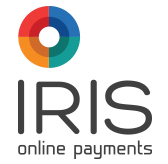
Can you name a beneficiary on a bank account? How to add a beneficiary for a bank account? In the financial worl a beneficiary typically refers to someone eligible to receive distributions from a trust, will, or life insurance policy. Beneficiaries are either named specifically in.
Key Takeaways Checking accounts don’t require account holders to name a beneficiary. Many banks offer payable-on-death (POD) accounts as part of their standard offerings. A POD account instructs the bank to pass on a client’s assets to the beneficiary , which means money in a POD account is. A beneficiary designation, however, is different. Insurance policies and retirement plans have designated beneficiaries and the proceeds go directly to these individuals without the necessity of probate when you die.
The same holds true for bank accounts in some states. So, follow below steps: First of all login to your net banking account. So, your net banking dashboard will open. For payments to a SEPA country please check the SEPA payment box and all details apart from the IBAN will be generated.

What is a beneficiary bank? Please enter the full IBAN. You need to set this when you create a list.
When you create a list, you can set a default reference, which will appear automatically with every new beneficiary you add. Step 4: Next screen review your. It is mandatory to register the beneficiary account for online fund transfer.
The beneficiary of a bank account stands to inherit the funds held in the account when the account owner dies. If you have established a trust, the beneficiary you name receives the assets of the trust. Naming a beneficiary turns it into a payable-on-death account that can pass directly to a beneficiary with minimum fuss.
Moreover, choosing a beneficiary is required to open some bank accounts. The designated beneficiary , however, can be changed by the account holder at any time. LAW, INSURANCE, FINANCE a person or group that receives payments from a pension plan, insurance policy, trust, etc.
The family are beneficiaries of a trust which owns a number of properties around the world. Now enter One Time Password. After your death (and not before), the beneficiary can claim the money by going to the bank with a death certificate and identification.
Your beneficiary designation form will be on file at the bank, so the bank will know that it has legal authority to hand over the funds. Normally, when someone dies, their estate, including their bank accounts, goes through probate. Such an account could also be in the name of a Corporate, a partnership firm, a society and a trust. The POD is also known as a transfer-on-death, or TO account, also called a Totten trust.
Your bank or credit union will add the beneficiary to your account free of charge. Limit for payments without confirming new beneficiaries If you would prefer not to confirm your beneficiaries, you can instead set a monthly limit for online payments in e- banking or mobile banking. In this article, we have mentioned how you can easily add a beneficiary to your HDFC net banking account.
Here, below we have mentioned the full detail to add a payee to your HDFC net banking account. You can change the beneficiary as often as you like. Follow below mentioned a few simple steps to add a payee to your Net banking account.

You may establish a transfer on death (TOD) or payable on death (POD) beneficiary designation on your bank accounts. This same type of beneficiary designation is also available with many brokerage accounts. Contact your brokerage company to establish a beneficiary designation on your personal account. Now if you want to add a beneficiary account which belongs to Axis Bank then click on the Add Payee button. And if the beneficiary account belongs to other banks click on Other Banks Account link and then click on Add Payee button.
You will be asked to enter the payee details, enter everything which is asked to you and click on Proceed button. Do you want to know how to delete the beneficiary in the HDFC Bank and that too online? Well, we have some important things that you need to know about if you want to complete this process successfully.
No comments:
Post a Comment
Note: only a member of this blog may post a comment.